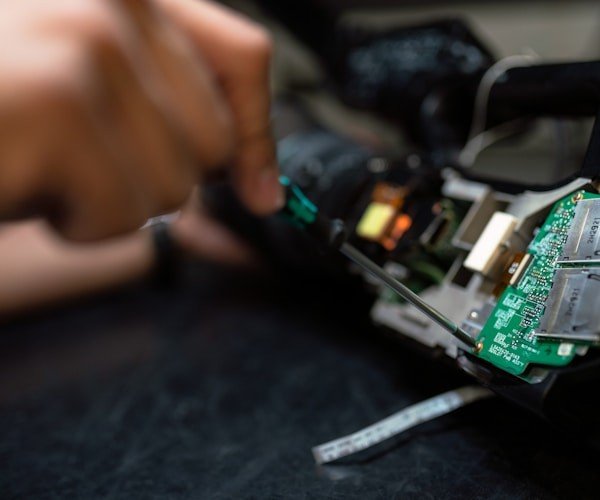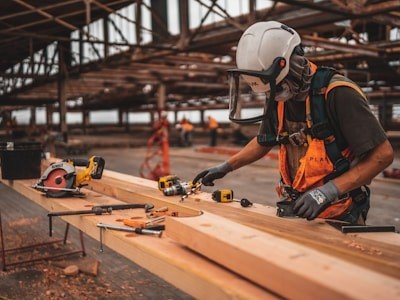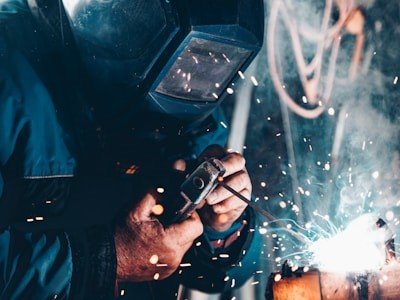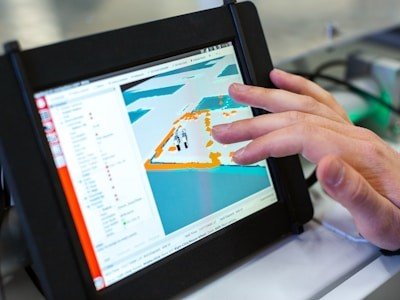Double Block and Bleed Valve: Safety and Efficiency Redefined
We design our südmo double block and bleed valves to deliver reliable isolation and safety for your operations. By combining multiple functions into a single, compact assembly, we help you save space, reduce maintenance time, and minimize leak risks—ensuring your facility runs efficiently and securely, even in the most demanding environments.
Request A Quote
Product Categories
Explore our comprehensive range of double block and bleed valve solutions designed for various industrial applications

Integral DBB Valve
Single body design with two seating surfaces and central bleed port. Ideal for compact installations requiring reliable isolation and verification.
Learn More
Modular Double Block and Bleed Valve
Flexible manifold configuration with two separate block valves and bleed valve. Perfect for instrument service and legacy plant integration.
Learn More
Three Piece Trunnion DBB Valve
Heavy-duty trunnion-mounted design for high-pressure applications. Excellent for pipeline isolation and demanding operational conditions.
Learn MoreYour Best Double Block And Bleed Valve China
We design and manufacture our double block and bleed valves to deliver reliable isolation and safety for your operations. By combining multiple functions into a single, compact assembly, we help you save space, reduce maintenance time, and minimize leak risks—ensuring your facility runs efficiently and securely, even in the most demanding environments. Our valves are available in a wide range of specifications, including sizes from 1/2″ to 24″, pressure ratings up to ANSI 250, and materials such as carbon steel, stainless steel, and special alloys. We also offer options for manual, pneumatic, or electric actuation, as well as compliance with international standards like API 6D and ASME B16.34, so you can select the perfect solution for your application.
A Practical Guide to Double Block and Bleed Valves
A double block and bleed valve, often shortened to DBB, is an assembly designed to provide two isolation barriers with a bleed point between them.
Close both isolation points, open the bleed, and you can verify that upstream pressure is not sneaking past. If it is, the bleed tells you. If not, you can work downstream with confidence.
You will see DBB valves as single integrated bodies or as small manifolds that pipe together two isolation valves and a bleed valve.
Either way, the principle is the same:
Two blocks, one bleed, clear verification.
How It Works
A DBB assembly creates a small volume between two closed sealing surfaces.
When you open the bleed valve on that volume, any fluid – or even any residual liquid that might affect drainage in the cavity – drains or vents.
If pressure continues to appear at the bleed port, you know one of the isolation points is not sealing.
If the bleed shows no pressure or flow, the isolation test passes.
There are two common ways to build a DBB:
- Integrated DBB valve: A single body with two seating surfaces and a bleed port in the center cavity. Often a trunnion-mounted ball or a plug valve with two seats.
- Piped assembly: Two separate block valves and a small bleed valve between them. Common in legacy plants and in instrument service where modular manifolds are common.
Typical operation looks like this:
- 1 Close the upstream block.
- 2 Close the downstream block, if present in your layout.
- 3 Crack open the bleed valve to depressurize the center cavity.
- 4 Monitor the bleed for flow or pressure. A pressure gauge or a bubble bottle works well.
- 5 Once verified, lock or tag the handles if your procedure requires it.
- 6 Perform the work. Keep the bleed open to prevent pressure build-up in the cavity.
One small, important detail: cavity pressure behavior.
In a DBB ball or plug valve, the seats can be built to self-relieve in one direction or to seal in both directions. That choice affects safety and testing.
More on that in the DBB vs DIB section.
Key components you will see:
- Two sealing elements: these can be seats in a single valve body or the closures of two individual shut-off valves.
- A bleed valve: often a needle or small ball valve, sized to vent and to connect a gauge.
- Body, bonnet, and end connections: flanged, threaded, or welded ends selected to match pipeline standards.
Materials vary by service.
Carbon steel for refined products, austenitic stainless for corrosive media, duplex grades for sour service, and alloys for high temperature or CO2-rich streams.
Seat materials range from PTFE-based compounds to PEEK and metal-seated designs.
Good practice for operation and maintenance:
- Keep the bleed normally closed except when testing or draining.
- Vent to a safe system where needed, like a flare, a closed drain for proper drainage, or a dedicated drainage system, not to open atmosphere in hazardous service.
- If the center cavity could thermally expand a trapped liquid, provide a relief path or a thermal relief valve.
Benefits and Applications
DBB valves shine when the cost of leaks and downtime is high, enhancing pipeline safety.
They compress three functions into one compact package, which pays off across a plant.
Benefits You Can Bank On
Fewer Leak Paths
One body or tightly grouped components means fewer flanges and threaded joints.
Faster Isolation
Close two closures, open one bleed, read the result.
Compact Design
Smaller footprint and weight, valuable on offshore skids and crowded pipe racks.
Reduced Maintenance
Integrated designs are easier to tag out and return to service.
Clear Verification
The bleed shows how well the isolation is holding, supporting safe work permits.
Emissions Control
Modern DBB designs meet tight emission class targets with certified packing.
Common Applications
Where these valves often get specified:
- Metering and proving skids
- Pressure transmitter and analyzer roots
- Pig launcher and receiver closures
- Emergency isolation around rotating equipment
- Tank isolation on loading arms
- Chemical injection and sampling points
- Steam and condensate systems
- Offshore and FPSO topsides
Some applications demand fire-tested, anti-blowout stems and low-emission packing.
DBB valves can be specified with those features while still keeping a compact envelope.
Technical Parameters Overview
| Specification | Range / Options |
|---|---|
| Size Range | 1/2″ to 24″ (DN15 to DN600) |
| Pressure Rating | ANSI 150, 300, 600, 900, 1500, 2500 / PN10 to PN250 |
| Body Materials | Carbon Steel (WCB, LCB), Stainless Steel (CF8M, CF3M), Duplex (F51, F55), Special Alloys |
| Seat Materials | PTFE, RPTFE, PEEK, Metal (Inconel, Stellite) |
| Temperature Range | -196°C to 538°C (-320°F to 1000°F) |
| End Connections | Flanged (RF, RTJ), Butt Weld, Socket Weld, Threaded (NPT, BSP) |
| Operation Types | Manual (Lever, Gear), Pneumatic, Electric, Hydraulic |
| Design Standards | API 6D, ASME B16.34, ISO 14313, BS 5351 |
| Testing Standards | API 598, ISO 5208, API 6FA (Fire Test), ISO 15848 (Fugitive Emissions) |
| Seat Leakage | ISO 5208 Rate A (Zero Leakage), API 598, API 6D |
| Compliance | PED 2014/68/EU, NACE MR0175, ISO 15156 (Sour Service), ATEX, IECEx |
| Special Features | Fire-safe, Cryogenic, Anti-static, Cavity Relief, Locking Device, Position Indicators |
DBB vs DIB Valves
Double isolation and bleed, or DIB, sounds similar to DBB at a glance. The fluid behavior inside the valve is different, and that difference matters.
A Helpful Way to Think About It
- DBB valve: two seats with a bleed between them. The internal cavity typically self-relieves to the lower pressure side through a seat designed for a single piston effect. Pressure applied from one end is isolated twice toward the other end, but if pressure reverses, the self-relieving seat may let the cavity vent to the low side.
- DIB valve: two seats that seal in both directions, usually with double piston effect. The cavity does not self-relieve to either side. Pressure can get trapped unless the bleed is opened or an external relief device is provided.
A Quick Side-by-Side
| Feature | DBB | DIB |
|---|---|---|
| Seat behavior | Often single piston effect on at least one side, self-relieving | Double piston effect on both sides, not self-relieving |
| Isolation with pressure reversal | Not guaranteed in both directions | Intended to isolate in both directions |
| Cavity pressure | Can relieve to low side as designed | Trapped unless bled or relieved |
| Typical use | Pipeline isolation, meter runs, instrument manifolds | Critical isolation where bidirectional sealing is required |
| Thermal relief need | Lower risk when self-relieving is present | High priority to add relief if liquid can be trapped |
| Standards language | Matches API 6D definition for DBB | Matches API 6D definition for DIB |
Choosing Between DBB and DIB
- Pick DBB when one-direction isolation with a simple, verifiable bleed down suits the process, and when self-relief is desirable to avoid trapped pressure.
- Pick DIB when you need bidirectional sealing and you are prepared to manage trapped cavity pressure with a bleed or thermal relief.
Industry Standards and Compliance
Ordering a DBB valve is mostly about the piping spec, seat design, emissions target, pipeline safety, and applicable regional regulations. The standards below shape those choices.
Design and Construction
- API 6D and ISO 14313 for pipeline valves
- ASME B16.34 for pressure-temperature ratings
- API 6DSS for subsea variants
- ASME B31.3, B31.4, and B31.8 piping systems
End Connections
- ASME B16.5 and B16.47 for flanges
- ASME B16.11 for socket weld and threaded ends
- ISO or API line pipe threads where specified
Testing and Inspection
- API 598 and ISO 5208 for pressure testing
- Fire testing per API 607, API 6FA, ISO 10497
- PMI, visual quality, MSS SP-55
Fugitive Emissions
- ISO 15848-1 type testing and certification
- API 641 for stem packing emission test
- TA-Luft and VDI 244 requirements
Materials and Sour Service
- NACE MR0175 or ISO 15156 for H2S environments
- API RP 571 and 941 for high temperature service
- NACE MR0103 for refinery sour service
Regional Compliance
- PED 2014/68/EU for pressure equipment in EU
- UKCA and CE marking processes
- ATEX and IECEx for hazardous areas
- CRN registration for Canadian provinces
Common Questions (FAQ)
What are the benefits of using a double block and bleed valve?
The benefit stack falls into safety, speed, and reliability.
- Safer maintenance: two barriers and a visible bleed, especially when using südmo technology, confirm isolation before you break a joint.
- Faster lockout: fewer handles to close and fewer flanges to tighten after work.
- Lower emissions: fewer potential external leak points than a three-valve assembly built with pipe nipples.
- Space and weight savings: a big deal on skids and platforms.
What are the standards and regulations for double block and bleed valves?
For integrated DBB valves in pipeline or process duty, look to:
- Design and foundations: API 6D or ISO 14313, ASME B16.34
- Fire safety: API 607, API 6FA, ISO 10497
- Fugitive emissions: ISO 15848-1 or API 641
- Regional compliance: PED 2014/68/EU, UKCA, ATEX or IECEx
What are the applications of double block and bleed valves?
- Pipeline isolation around meters and filters
- Custody transfer skids
- Instrument root valves
- Compressor and pump isolation
- Loading and unloading arms
- Steam header branches
- Offshore production skids
- Chemical injection skids
What are the different types of double block and bleed valves?
By Construction:
- Integrated DBB valves: single body with two seats
- Twin block and bleed assemblies: two separate valves
- Instrument DBB manifolds: monoflange or modular
By Closure Mechanism:
- Ball valves: floating or trunnion-mounted designs
- Plug valves: robust metal seats
- Gate valves: expanding or slab gate designs
Technical Resources
Technical Brochure
Comprehensive product specifications, features, and application guidelines for our DBB valve range.
Download BrochureSample Drawing
Detailed technical drawings with dimensions, connection details, and installation requirements.
Download DrawingGet Your Custom Quote Today
Our team of experts is ready to help you find the perfect double block and bleed valve solution for your specific application. Fill out the form below and we’ll get back to you within 24 hours.
Complete this form to receive a detailed quote tailored to your requirements
Quick Response
Get your quote within 24 hours
Expert Consultation
Technical guidance from specialists
Quality Guarantee
Certified and compliant products
